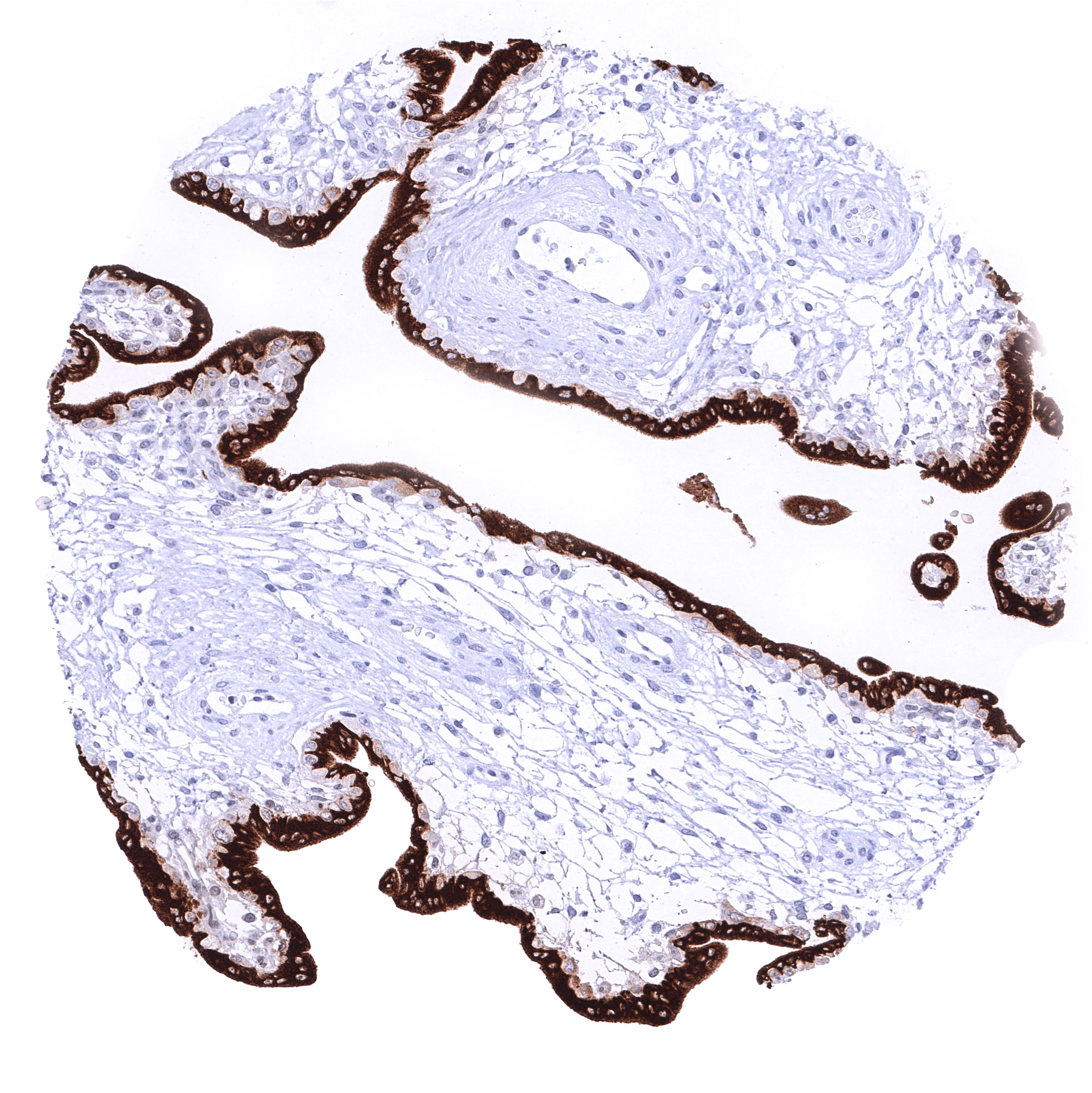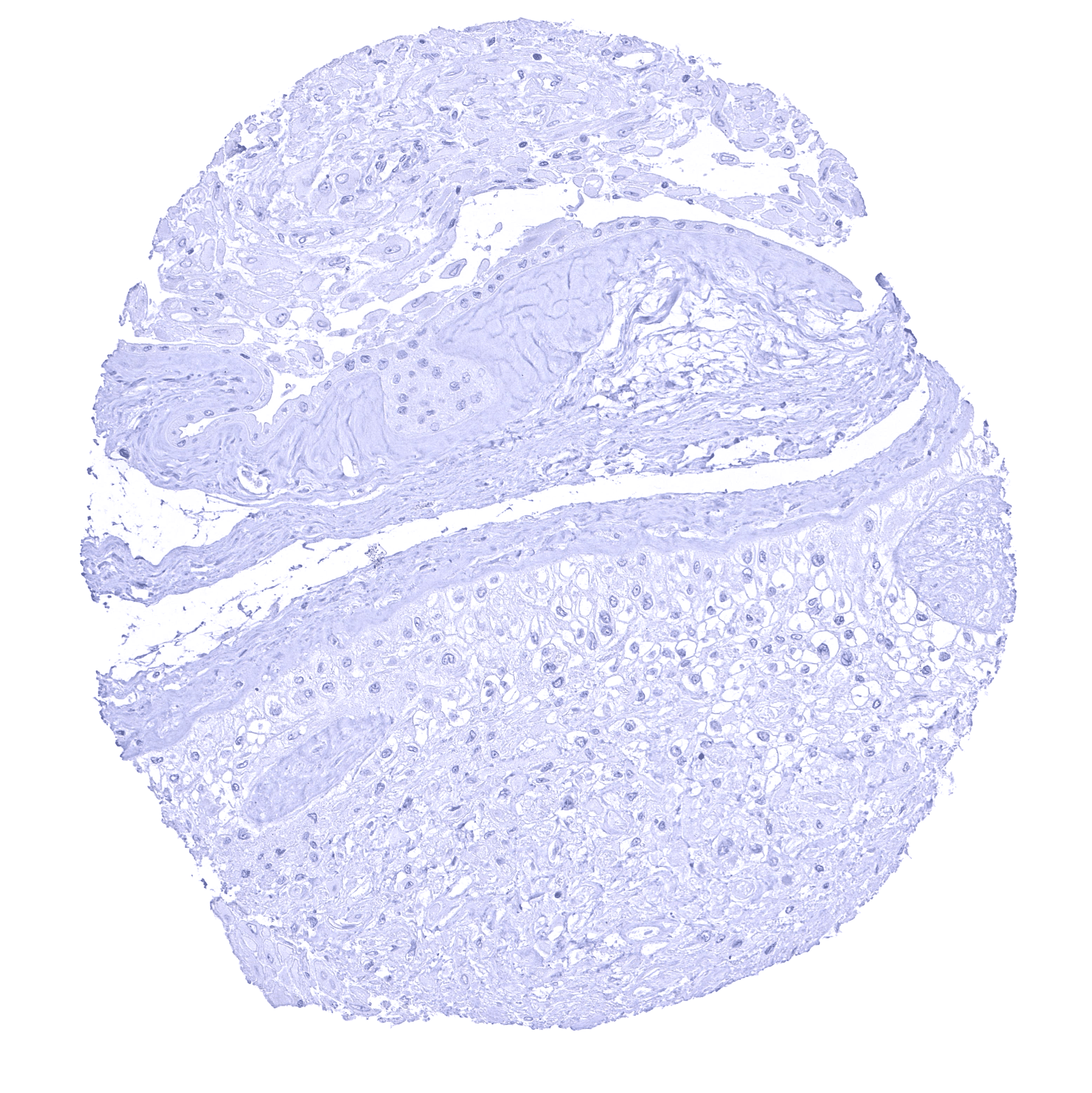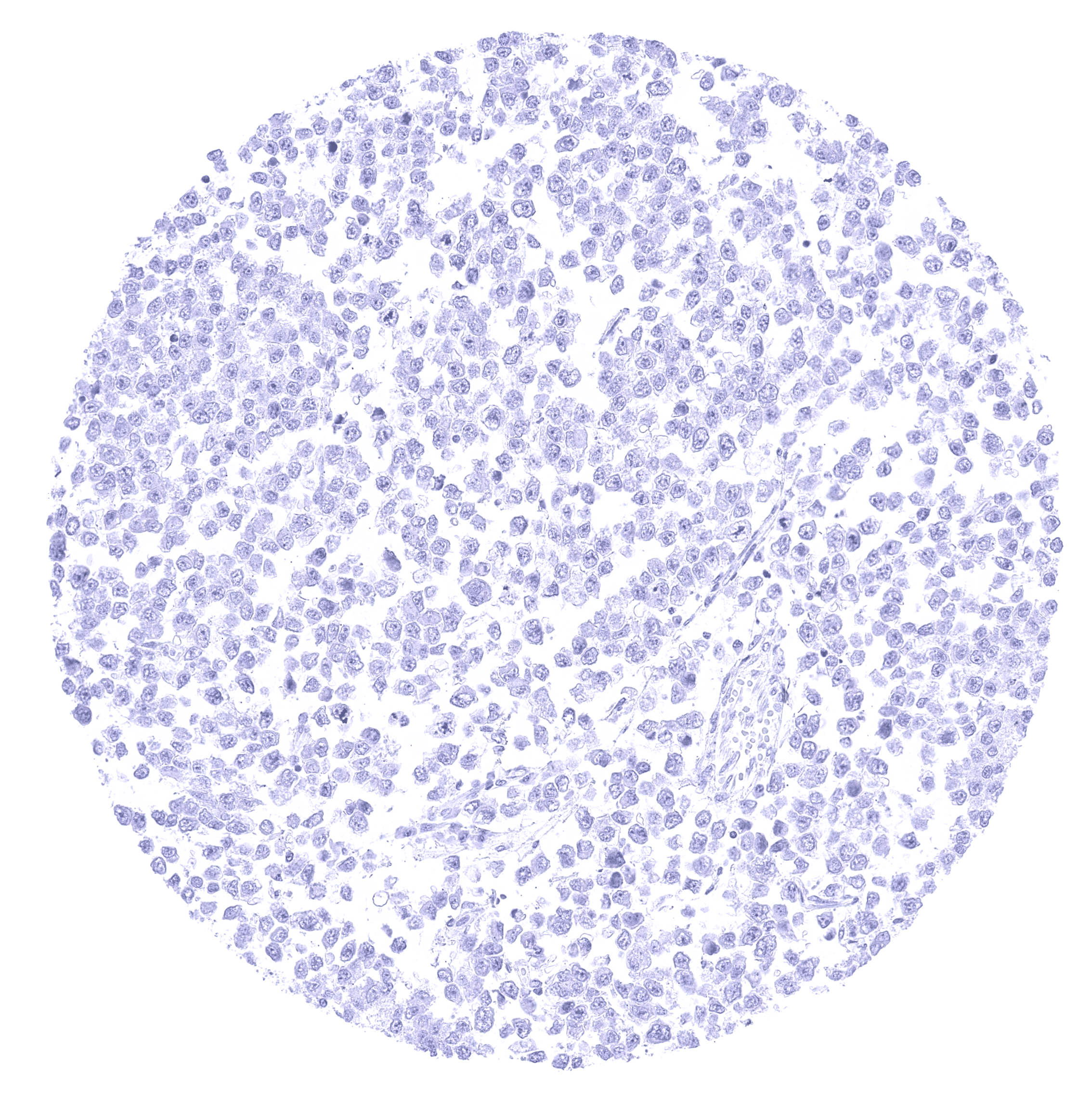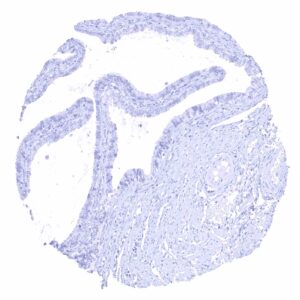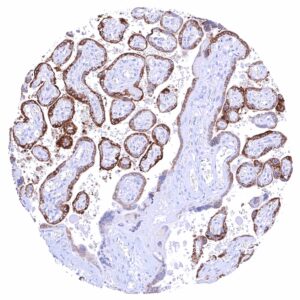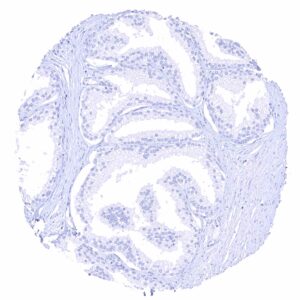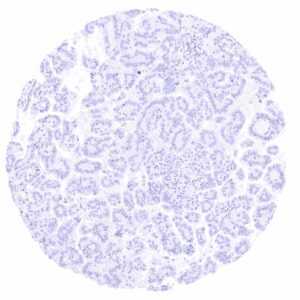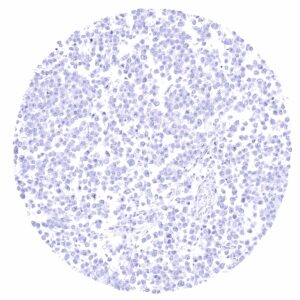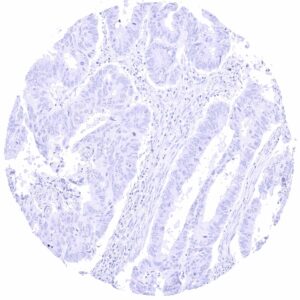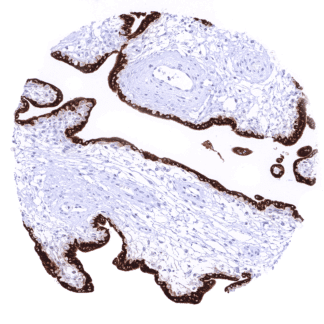295,00 € – 995,00 €
Product details
Synonyms = KiSS-1 metastasis suppressor , HH13 , KiSS-1
Antibody type = Recombinant Rabbit monoclonal / IgG
Clone = HMV3972
Positive control = Placenta (mature): A strong KISS1 staining should be seen in the cytotrophoblast while stroma cells remain negative.
Negative control = Kidney: KISS1 staining should be completely absent in all cells (note: other tissues can also be used as negative controls in case of KISS1).
Cellular localization = Secreted
Reactivity = Human
Application = Immunohistochemistry
Dilution = 1:100 – 1:200
Intended Use = Research Use Only
Relevance of Antibody
Kiss1 is a protein with high specificity for the cytotrophoblast.
Biology Behind
KISS1 (kisspeptin) is a 145 amino acid protein which is coded by the KISS1 gene on chromosome 1q32.1. KISS1 is typically located in the cytoplasm. It is released to the serum where it is converted into multiple smaller fragments called kisspeptins (KPs). These contain either 54, 14, 13, or 10 amino acids and they are named accordingly as kisspeptin-54, kisspeptin-14, kisspeptin-13, or kisspeptin-10. They all contain a highly similar conserved ten amino acid region at the C-terminal end which is known to have neuropeptide cleaving properties. All KPs and KISS1 have been demonstrated to constitute efficient positive regulators of the reproductive neuroendocrine axis in the brain. KISS1 is extensively expressed in the placenta where KISS1 is believed to play a pivotal role in the regulation of tissue invasive properties of the early placenta. KISS1 is also thought to play a role in cancer invasiveness and metastasis. Evidence suggests that – depending on the tumor type – KISS1 may exert either a tumor promoting or a tumor suppressive role.
Staining Pattern in Normal Tissues
Among normal tissues evaluated by MSVA, KISS1 is solely seen in syncytiotrophoblast cells of the placenta. Images describing the Kiss1 staining pattern in normal tissues obtained by the antibody HMV3972 are shown in our “Normal Tissue Gallery”. KISS1 expression has also been described to occur in highly specific regions of the brain.
| Brain | Cerebrum | Negative. |
| Cerebellum | Negative. | |
| Endocrine Tissues | Thyroid | Negative. |
| Parathyroid | Negative. | |
| Adrenal gland | Negative. | |
| Pituitary gland | Negative. | |
| Respiratory system | Respiratory epithelium | Negative. |
| Lung | Negative. | |
| Gastrointestinal Tract | Salivary glands | Negative. |
| Esophagus | Negative. | |
| Stomach | Negative. | |
| Duodenum | Negative. | |
| Small intestine | Negative. | |
| Appendix | Negative. | |
| Colon | Negative. | |
| Rectum | Negative. | |
| Liver | Negative. | |
| Gallbladder | Negative. | |
| Pancreas | Negative. | |
| Genitourinary | Kidney | Negative. |
| Urothelium | Negative. | |
| Male genital | Prostate | Negative. |
| Seminal vesicles | Negative. | |
| Testis | Negative. | |
| Epididymis | Negative. | |
| Female genital | Breast | Negative. |
| Uterus, myometrium | Negative. | |
| Uterus, ectocervix | Negative. | |
| Uterus endocervix | Negative. | |
| Uterus, endometrium | Negative. | |
| Fallopian Tube | Negative. | |
| Ovary | Negative. | |
| Placenta early | Strong cytoplasmic KISS1 staining in the cytotrophoblast. Staining is perhaps more intense in the first then in the last trimenon. | |
| Placenta mature | Strong cytoplasmic KISS1 staining in the cytotrophoblast. Staining is perhaps more intense in the first then in the last trimenon. | |
| Amnion | Negative. | |
| Chorion | Negative. | |
| Skin | Epidermis | Negative. |
| Sebaceous glands | Negative. | |
| Muscle/connective tissue | Heart muscle | Negative. |
| Skeletal muscle | Negative. | |
| Smooth muscle | Negative. | |
| Vessel walls | Negative. | |
| Fat | Negative. | |
| Stroma | Negative. | |
| Endothelium | Negative. | |
| Bone marrow/ lymphoid tissue | Bone marrow | Negative. |
| Lymph node | Negative. | |
| Spleen | Negative. | |
| Thymus | Negative. | |
| Tonsil | Negative. | |
| Remarks | Full tissue specificity for the placenta. |
These findings are largely consistent with the RNA data described in the Human Protein Atlas (Tissue expression Kiss1) which also suggest ubiquitous KDM6A expression.
Positive control = Placenta (mature): A strong KISS1 staining should be seen in the cytotrophoblast while stroma cells remain negative.
Negative control = Kidney: KISS1 staining should be completely absent in all cells (note: other tissues can also be used as negative controls in case of KISS1).
Staining Pattern in Relevant Tumor Types
KISS1 expression has been described to occur in several cancer types, but systematic data are lacking.
The TCGA findings on Kiss1 RNA expression in different tumor categories have been summarized in the Human Protein Atlas.
Compatibility of Antibodies
No data available at the moment
Protocol Recommendations
IHC users have different preferences on how the stains should look like. Some prefer high staining intensity of the target stain and even accept some background. Others favor absolute specificity and lighter target stains. Factors that invariably lead to more intense staining include higher concentration of the antibody and visualization tools, longer incubation time, higher temperature during incubation, higher temperature and longer duration of the heat induced epitope retrieval (slide pretreatment). The impact of the pH during slide pretreatment has variable effects and depends on the antibody and the target protein.
All images and data shown here and in our image galleries are obtained by the manual protocol described below. Other protocols resulting in equivalent staining are described as well.
Manual protocol
Freshly cut sections should be used (less than 10 days between cutting and staining). Heat-induced antigen retrieval for 5 minutes in an autoclave at 121°C in pH 7,8 Target Retrieval Solution buffer. Apply HMV3972 at a dilution of 1:150 at 37°C for 60 minutes. Visualization of bound antibody by the EnVision Kit (Dako, Agilent) according to the manufacturer’s directions.
Potential Research Applications
- The KISS1 expression pattern in different tumors and its clinical significance is unknown.
- Studies are needed to explore the tumor suppressive or tumor-promoting roles of KISS1 in cancer
Evidence for Antibody Specificity in IHC
There are two ways how the specificity of antibodies can be documented for immunohistochemistry on formalin fixed tissues. These are: 1. Comparison with a second independent method for target expression measurement across a large number of different tissue types (orthogonal strategy), and 2. Comparison with one or several independent antibodies for the same target and showing that all positive staining results are also seen with other antibodies for the same target (independent antibody strategy).
Orthogonal validation: For the antibody HMV3972, specificity is demonstrated by the complete concordance of the immunostaining data with data from three independent RNA screening studies, including the Human Protein Atlas (HPA) RNA-seq tissue dataset, the FANTOM5 project, and the Genotype-Tissue Expression (GTEx) project, which are all summarized in the Human Protein Atlas (Tissue expression Kiss1). Immunostaining by using HMV3972 was only detected in the placenta which also was the only organ with documented RNA expression.
Comparison of antibodies: Was not performed for this antibody because of perfect data from “orthogonal validation”

